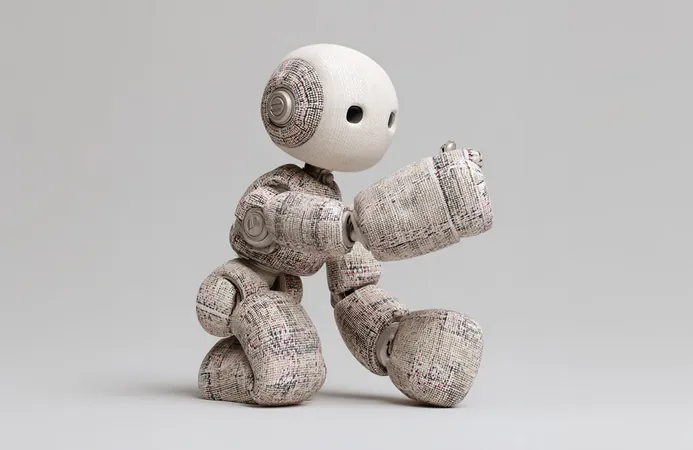
Revolutionary AI Lets Robots Learn to Control Themselves—No Programming Needed!
2025-06-29
Author: Ming
MIT's Pioneering Vision System Transforms Robotics
Imagine a world where robots can teach themselves how to function without extensive programming. At MIT's Computer Science and Artificial Intelligence Laboratory (CSAIL), researchers are making this futuristic vision a reality with a groundbreaking new system that empowers robots to learn their own control mechanisms.
From Programming to Freedom
Lead researcher Sizhe Lester Li asserts, "This work signifies a shift from programming robots to teaching them." The future of robotics aims to be more intuitive: instead of spending countless hours coding and engineering, humans could simply demonstrate tasks, allowing robots to autonomously learn how to accomplish them.
Breaking the Barriers of Traditional Robotics
Motivated by the desire to make robotics affordable and flexible, MIT scientists argue that the true limitation isn't hardware—it's how we control these machines. Conventional robots, with rigid structures and complex sensor systems, are easy to model but stifling in design. Enter NJF (Neural Jacobian Fields), a revolutionary system that lets robots establish their own models through observation rather than being forced into predefined templates.
Learning Through Observation: The Genius of NJF
The NJF system learns like a human: it experiments with random actions, recording its movements through vision. It's been tested on various robotic platforms, from soft robotic hands to 3D-printed arms, all without requiring onboard sensors. Each time it learns its shape and the way it responds to movements through simple visual cues and random motions.
Real-World Applications Beyond the Lab
Imagine robots capable of precision agricultural work, operating on construction sites without elaborate sensor systems, or navigating bustling environments with ease. NJF’s neural network captures both a robot's geometry and its sensitivity to commands, paving the way for adaptability in complex, unstructured spaces.
Simplifying Control with Vision Alone
Traditionally, robots relied heavily on expensive sensors like GPS and intricate tracking systems. However, as co-author Daniela Rus explains, "Vision provides the necessary cues for control and localization, eliminating the need for costly infrastructure." This innovation opens doors for robots to operate effectively in dynamic settings—from indoor drones to mobile manipulators in cluttered homes.
The Future is Bright, But Challenges Remain
While the NJF system is a leap forward, it currently requires multiple cameras for training and struggles to generalize across different robots. However, researchers are optimistic. Future plans include making the system more accessible—imagine hobbyists capturing a robot's movements with their smartphones to create control models without specialized knowledge.
Empowering Robots with Self-Awareness
Li emphasizes the importance of this new learning approach: "NJF offers robots a way to understand their movements through vision, fostering a kind of self-awareness that is crucial for real-world applications." This reflects a trend that’s reshaping robotics: moving away from rigid programming to a more organic method of teaching through interaction.
A New Era in Robotics Research
This groundbreaking research combines the talents from various disciplines within CSAIL, capturing the spirit of innovation that MIT is known for. As the team continues to develop NJF, the future looks bright with endless possibilities for automation, accessibility, and more intuitive robotics.

 Brasil (PT)
Brasil (PT)
 Canada (EN)
Canada (EN)
 Chile (ES)
Chile (ES)
 Česko (CS)
Česko (CS)
 대한민국 (KO)
대한민국 (KO)
 España (ES)
España (ES)
 France (FR)
France (FR)
 Hong Kong (EN)
Hong Kong (EN)
 Italia (IT)
Italia (IT)
 日本 (JA)
日本 (JA)
 Magyarország (HU)
Magyarország (HU)
 Norge (NO)
Norge (NO)
 Polska (PL)
Polska (PL)
 Schweiz (DE)
Schweiz (DE)
 Singapore (EN)
Singapore (EN)
 Sverige (SV)
Sverige (SV)
 Suomi (FI)
Suomi (FI)
 Türkiye (TR)
Türkiye (TR)
 الإمارات العربية المتحدة (AR)
الإمارات العربية المتحدة (AR)